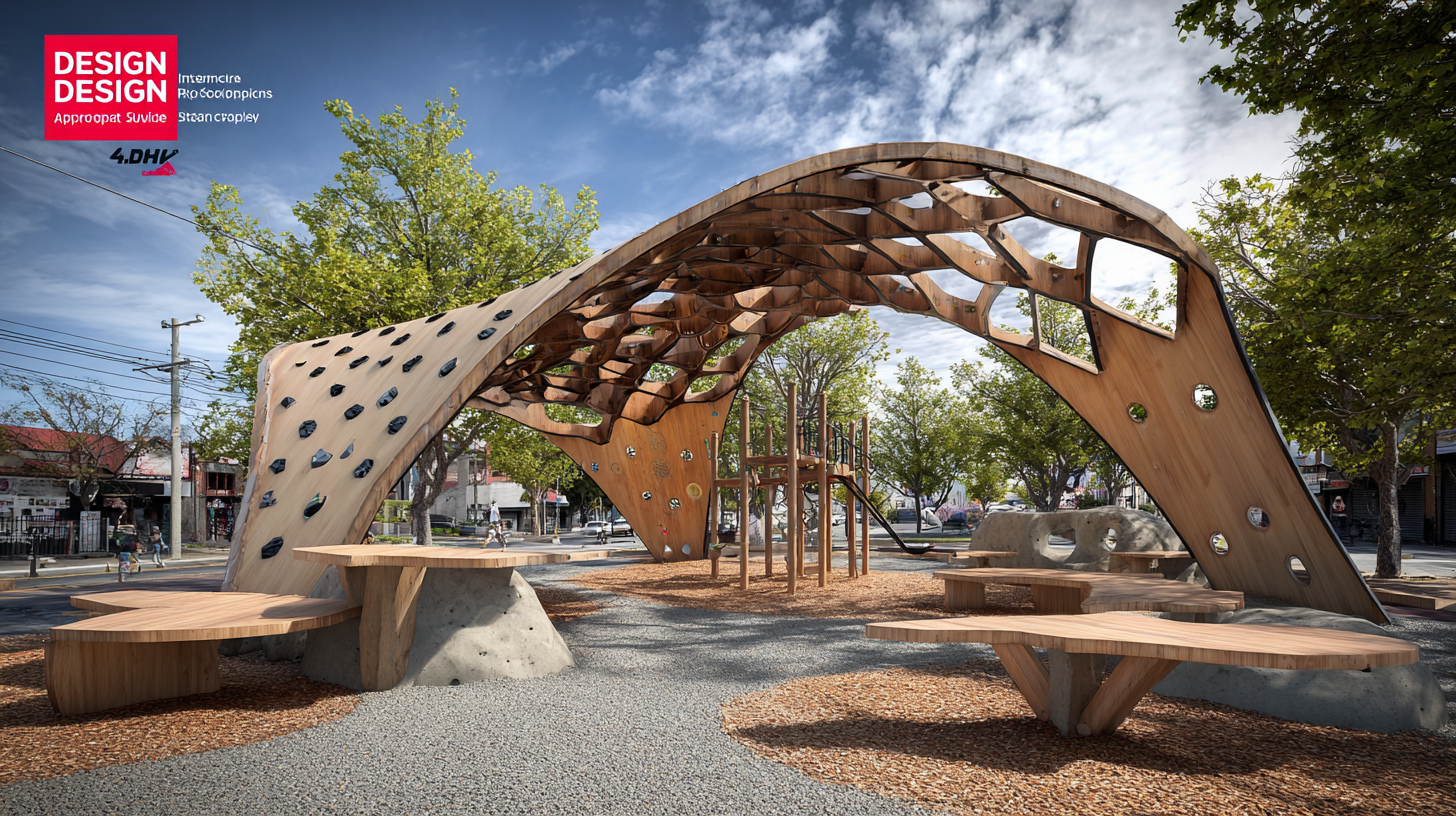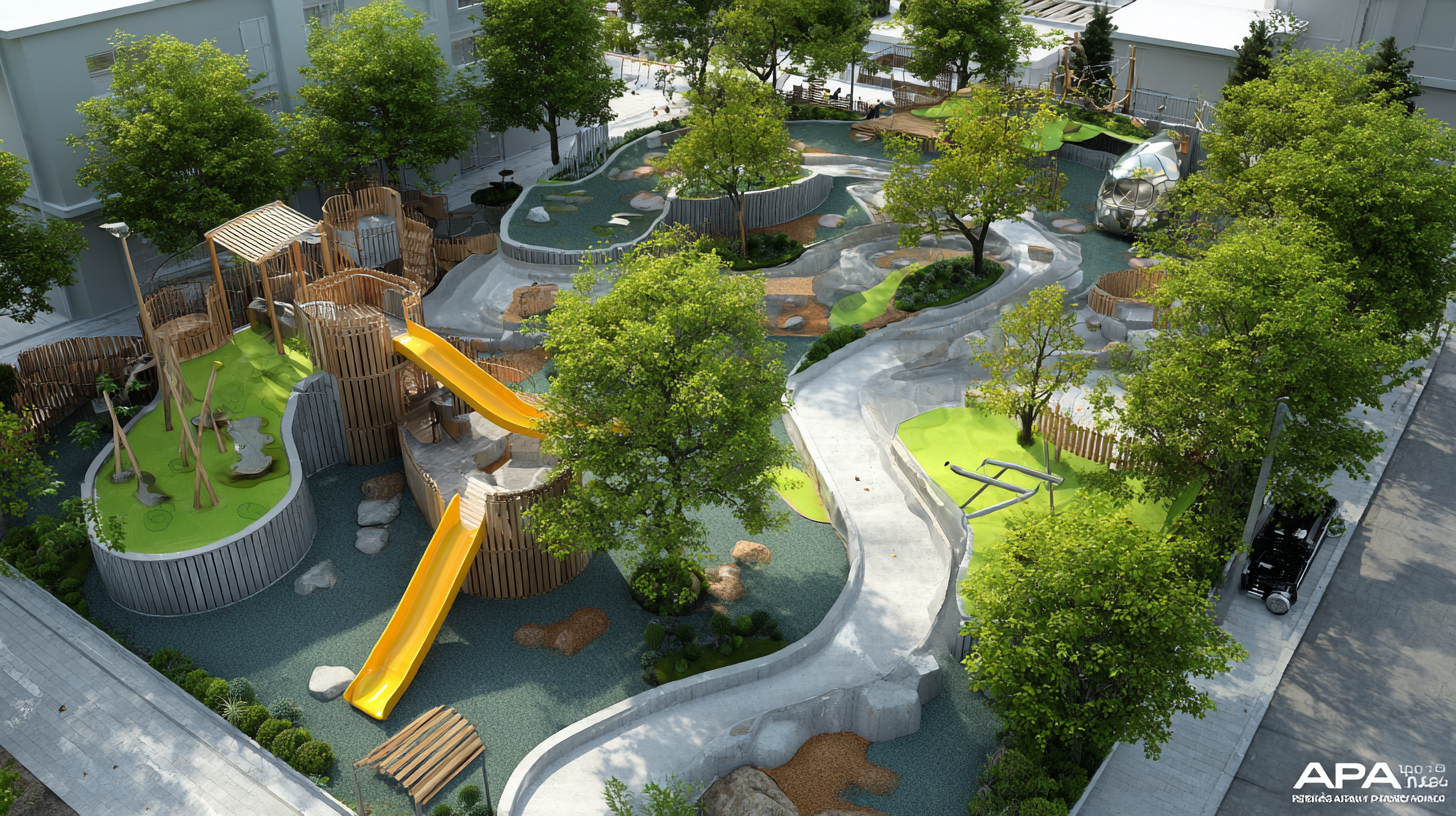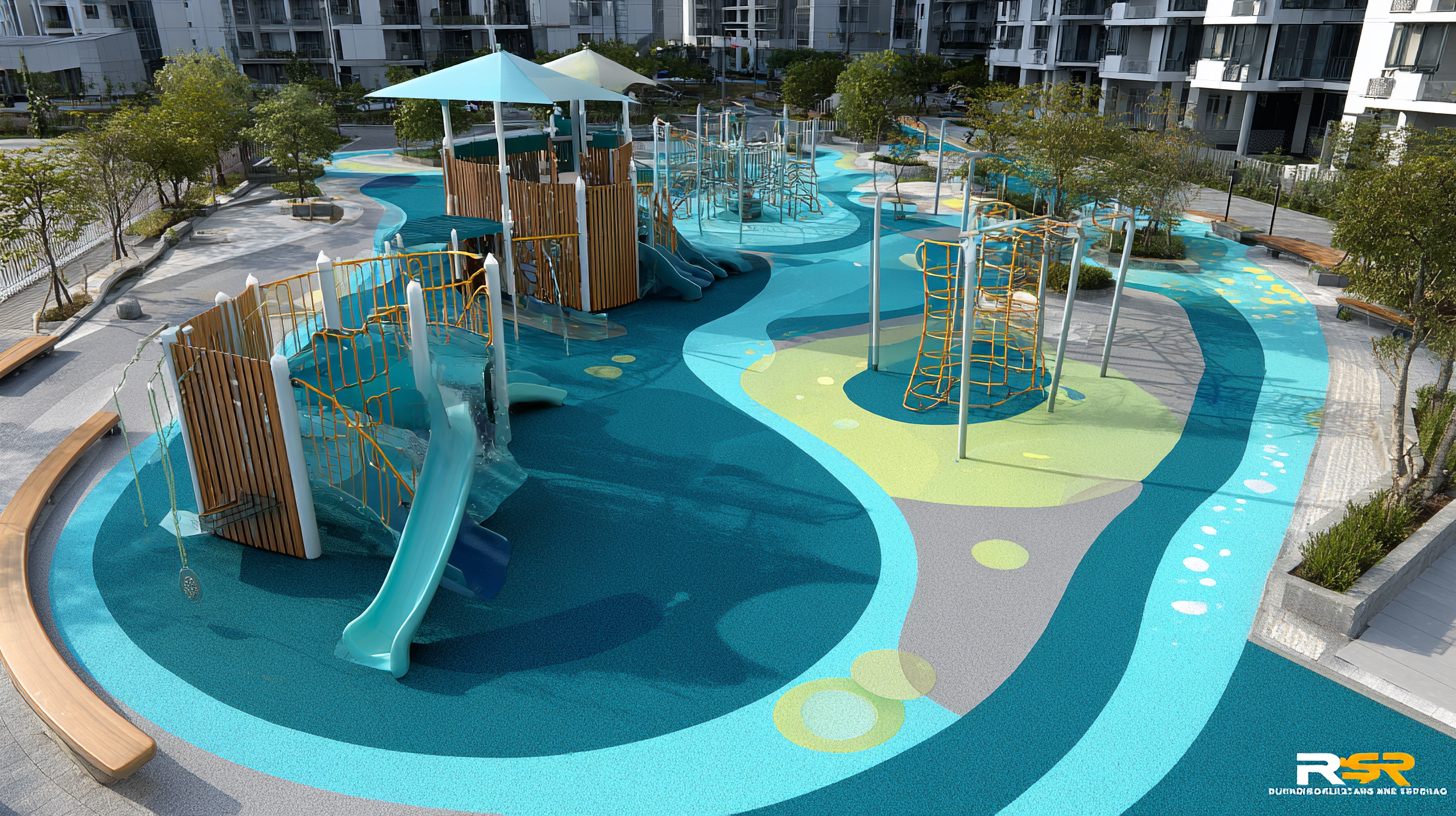
Inquiry
Form loading...
In recent years, the significance of thoughtful Outdoor Playground Design in community spaces has gained increased attention, reflecting broader trends in urban development and child well-being. According to a report by the National Association for the Education of Young Children (NAEYC), access to quality outdoor play environments is critical for the physical and social development of children. Furthermore, the International Playground Equipment Manufacturers Association (IPEMA) highlights that well-designed playgrounds not only promote healthy lifestyles but also contribute to community engagement and social cohesion. Innovative applications of outdoor playground designs, such as incorporating nature-inspired elements and adaptable play structures, are being recognized as essential in fostering inclusive play experiences for children of all abilities. As communities seek to enhance their public spaces, understanding the interplay between design, safety certifications, and community needs will be vital in creating playgrounds that equip the next generation for a healthy and active future.

In recent years, the importance of innovative outdoor playground design has gained momentum, particularly in promoting community engagement. Cities around the globe are increasingly recognizing the necessity of providing children with not just safe, but also stimulating environments conducive to play. As highlighted in recent discussions surrounding urban strategies, ensuring that children have the right to play outdoors is a fundamental aspect of fostering healthy communities. Playground designs that integrate natural elements and interactive features encourage not only physical activity but also social interaction among children and their families.
The latest trends in outdoor playground design focus on inclusivity and accessibility. Vibrant, multi-sensory equipment designed for children of all abilities transforms traditional play spaces into hubs of community engagement. Incorporating features like climbing structures, sensory gardens, and flexible spaces for creative play enables children to connect with each other and their environment in meaningful ways. This innovative approach not only enhances the play experience but also promotes equity, allowing every child, regardless of their background, to enjoy the benefits of outdoor play. As cities continue to evolve, the integration of such designs will be crucial in ensuring that every child has a chance to explore, learn, and thrive in community spaces.

Innovative playground design goes beyond aesthetics; it plays a crucial role in facilitating child development. According to a report by the National Association for the Education of Young Children (NAEYC), environments that are intentionally designed to include varied play experiences can significantly enhance children's cognitive, physical, social, and emotional skills. For instance, spaces that provide natural elements such as trees and water features have been shown to increase children’s engagement, leading to up to a 40% improvement in problem-solving abilities during play.
Moreover, a study published in the Journal of Pediatric Health Care highlights that children who engage in well-designed outdoor play areas demonstrate better social interaction skills and emotional resilience. The study found that children who regularly played in community parks with innovative designs exhibited a 25% increase in cooperative play and a marked decrease in behavioral issues. By leveraging these insights, communities can optimize their playgrounds to not only support leisure activities but also foster essential developmental skills critical for children’s growth.

The integration of sustainable materials and technology in modern playground construction is transforming community spaces into eco-friendly environments. According to a report by the International Association of Amusement Parks and Attractions, the use of recycled materials in playground designs has increased by 30% over the past five years, demonstrating a growing commitment to sustainability. For example, playground equipment made from recycled plastics not only reduces waste but also offers durability and resistance to wear and tear, making them ideal for outdoor settings.
Furthermore, advancements in technology have facilitated the implementation of smart playgrounds that promote both safety and interactivity. A study by the American Society of Landscape Architects indicated that modern playground designs increasingly incorporate energy-efficient lighting and water-saving features, which can decrease overall environmental impact by up to 40%. These innovative solutions not only enhance the play experience for children but also instill a sense of environmental stewardship in young minds. The synergy of sustainable materials and cutting-edge technology represents a forward-thinking approach that redefines how communities can utilize playgrounds for both play and education.
This chart illustrates the distribution of various sustainable materials used in modern playground construction, along with the adoption of innovative technologies. The data reflects the growing focus on eco-friendly practices in designing community playgrounds.
Creating inclusive play spaces is essential for meeting the diverse needs of communities. In designing outdoor playgrounds, it is crucial to consider accessibility for children of all abilities. This involves incorporating adaptable equipment that can serve children with physical disabilities, sensory processing issues, or developmental delays. For instance, playgrounds can feature ramps, wheelchair-accessible swings, and tactile surfaces that engage all children in play. By prioritizing inclusivity, we foster an environment where every child feels welcomed and encouraged to participate.
Furthermore, the design of community playgrounds should reflect the cultural diversity of the area. Incorporating elements that celebrate local heritage can strengthen community bonds and create a sense of belonging. For example, interactive installations that showcase cultural stories or artwork can stimulate imaginative play while educating children about their surroundings. By actively engaging community members in the design process, we can ensure that the playground not only meets functional needs but also resonates with the unique identity of the neighborhood, promoting social interaction and collaboration among families.
| Play Space Feature | Description | Target Age Group | Inclusive Design Element | Community Benefit |
|---|---|---|---|---|
| Accessible Paths | Smooth, wide pathways for wheelchair access | All ages | Paved walkways | Increased accessibility for individuals with mobility challenges |
| Adaptive Play Equipment | Specially designed swings and sensory panels for children with disabilities | 3-12 years | Sensory features | Promotes social interaction among children of varying abilities |
| Natural Play Areas | Play spaces that incorporate trees, rocks, and water | 2-10 years | Nature-based elements | Encourages creativity and imaginative play |
| Sensory Gardens | Gardens designed to stimulate all five senses | All ages | Interactive plants and textures | Provides therapeutic benefits and promotes relaxation |
| Community Gathering Spaces | Open areas with seating for group activities and events | All ages | Fixed seating and shade structures | Encourages community engagement and supports local events |
The integration of smart technologies into community playgrounds is transforming the way children play and interact in outdoor spaces. By incorporating features like augmented reality games, interactive fitness equipment, and smart sensors, playgrounds can provide a more engaging and educational experience. These technologies not only captivate children’s interest but also promote physical activity and social interaction, making playtime both fun and beneficial for their development. For instance, augmented reality can turn a simple game of tag into an immersive adventure where children can learn about local wildlife or geography while enjoying the playground.
Moreover, future-proof playgrounds can enhance safety and maintenance through technology. Smart sensors can monitor equipment wear and usage patterns, allowing for timely maintenance and ensuring that play areas remain safe and functional. Additionally, community engagement can be amplified through mobile apps that allow parents to share feedback, organize events, and even suggest new features for playgrounds. This not only strengthens community bonds but also empowers families to contribute to the evolving landscape of their recreational spaces. As we move towards a more digital age, incorporating these innovations into playground design is essential for creating dynamic, safe, and inclusive community areas that cater to the needs of today’s families.
